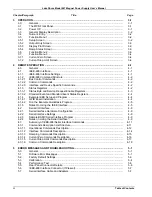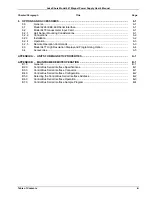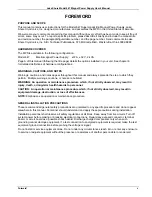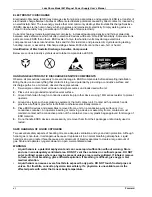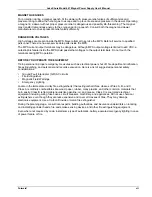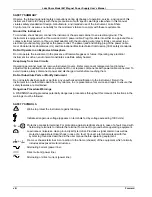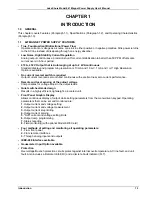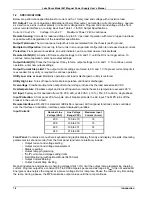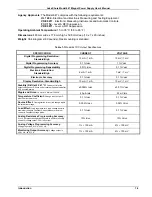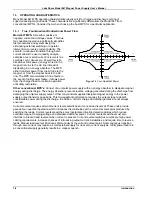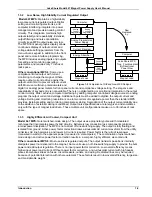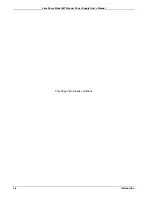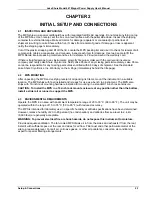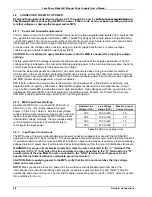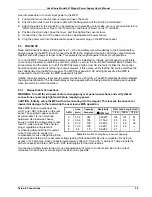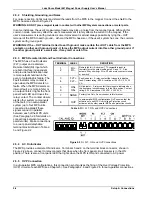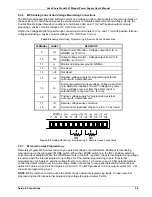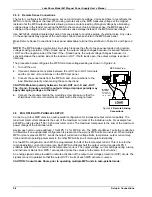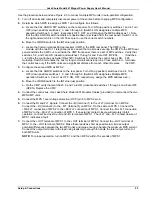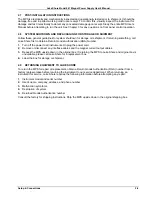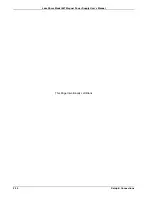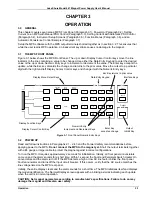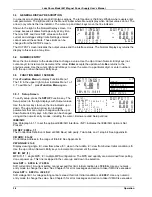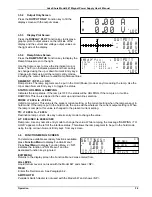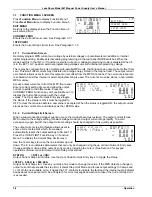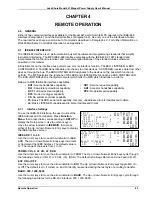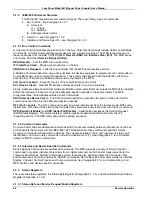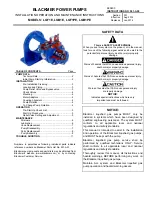
Lake Shore Model 647 Magnet Power Supply User’s Manual
Setup & Connections
2-2
2.4 CONNECTING THE MPS TO POWER
Read and thoroughly understand sections 2.4.1 through 2.4.3 and
the
safety recommendations in
the Forward
before connecting the MPS to power. Failure to do so may expose operating personnel
to lethal voltages or damage the magnet and/or MPS.
2.4.1 Power and Ground Requirements
The AC power source for the MPS should be frequency and voltage regulated and isolated from sources that
may generate Electromagnetic Interference (EMI). The MPS is designed for single-phase 3-wire alternating
current (AC) power; do not use two-wire (without ground) AC power. Lake Shore recommends Ground Fault
Interrupter (GFI) and Transient Surge Protection circuitry at the AC source.
In areas where AC voltage varies, consider using a constant voltage transformer. For power outages,
consider using an Uninterruptible Power Supply (UPS).
CAUTION: Do not attempt to apply electrical power until the MPS is checked for proper line voltage
settings.
Factory-preset MPS line voltage requirements allow proper operation at the shipping destination. The line
voltage setting is indicated on the rear panel. Before applying power to the main input power cable, check for
correct input power settings for the power source voltage.
Ground the instrument panels and cabinets. The safety ground provides a true ground path for electrical
circuitry and, in the event of internal electrical faults such as shorts, carries the entire fault current to ground
to protect users from electrical shock. The MPS has a three-conductor power input connector which grounds
the MPS chassis when plugged into a 3-wire receptacle.
EMI is both a natural and man-made electromagnetic phenomena which, either directly or indirectly, may
degrade electronic system performance. Natural EMI includes thunderstorms, solar disturbances, cosmic
rays, etc. Man-made EMI includes fixed and mobile transmitters, high voltage power lines, power tools and
appliances, florescent lights, and other equipment containing motors, heaters, etc. Protect the AC source
from EMI. Consider transient surge protectors for lightning protection.
2.4.2 MPS Input Power Ratings
Operate the MPS from a nominal 200, 208, 220, or
240 VAC (–10%, +5%) single-phase AC power
source, 50 to 60 Hz. Table 2-1 lists the input voltage
range and maximum current required for each nominal
input. A rear panel label indicates MPS factory-preset
nominal line voltage. Normally, the line voltage setting
is not changed in the field. Consult the factory to
reconfigure the input power.
2.4.3 Input Power Connections
The MPS uses a three-prong detachable input power connector (supplied) to mate with the UL/CSA/IEC
approved rear panel AC input connector. The user supplies a three-conductor power cord rated for at least 85
°C operation. Each conductor must be AWG #16 or larger. Larger wires may be required to prevent excessive
voltage drop in AC power lines if unit is located an extended distance from the main AC distribution terminals.
WARNING: For proper circuit breaker protection, mate the wire connected to the “L” terminal of the
connector to the “L” (hot) side of the line and mate the wire connected to the “N” terminal to the “N”
(neutral) side of the line. Mate the wire connected to the “GND” terminal to earth ground. Do not
operate this instrument without an adequate ground connection.
CAUTION: Before applying power to the MPS, verify that the AC source matches the line voltage
listed on the rear panel.
NOTE:
Make connections to the AC power line in accordance with applicable electrical codes. The
international color code for identifying utility supply conductors is green/yellow for earth (“GND”), blue for
neutral (N), and brown for line (L). The US and Canadian codes are green for earth (“GND”), white for neutral
(N), and black for line (L).
Nominal Line
Voltage (VAC)
Line Voltage
Range (VAC)
Maximum Input
Current (A rms)
200
180 to 210
16
208
188 to 218
15
220
198 to 231
14
240
216 to 250
13
Table 2-1
MPS Line Voltage Limits

